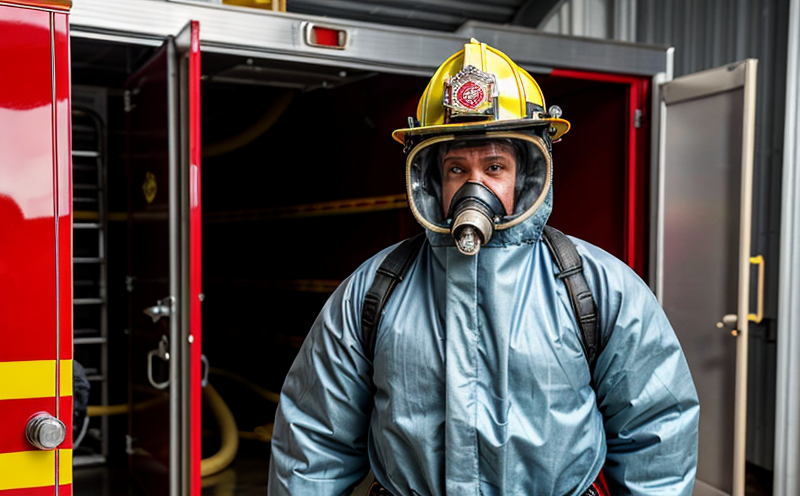NFPA 1975 Station/Work Uniforms Testing
The National Fire Protection Association (NFPA) Standard 1975 addresses the design, manufacture, testing, and certification of fire service protective clothing and equipment. This standard specifically focuses on station/work uniforms designed for firefighters to protect them while performing their duties at fire stations or during pre-incident activities.
Station/work uniforms are an essential part of a firefighter's personal protective equipment (PPE) arsenal. They provide thermal insulation, flame resistance, and protection against other hazards encountered in the workplace. The standard ensures that these uniforms meet stringent performance requirements to safeguard firefighters' health and safety.
The testing process under NFPA 1975 involves several critical parameters aimed at evaluating the uniform's ability to withstand various stressors and maintain its protective integrity over time. These tests are crucial for ensuring that the garments perform as expected in real-world scenarios, thereby enhancing firefighter safety.
One of the primary aspects tested is the thermal insulation performance. This assessment evaluates how well the material resists heat penetration and retains body temperature during exposure to fire or high-temperature environments. Another key test involves flame resistance, ensuring that the fabric does not ignite easily when exposed to flames, providing additional protection against burns.
Other tests include mechanical abrasion resistance, which checks the uniform's durability under repeated use, and chemical resistance, verifying its ability to withstand exposure to various chemicals commonly found in firefighting environments. Additionally, the standard requires testing for tear strength, seam slippage, and overall structural integrity to ensure that the garment remains intact even after extensive use.
Manufacturers must provide detailed documentation of each test conducted according to NFPA 1975 standards. This includes raw data from thermal manikin tests, flame resistance measurements, and other relevant metrics. Compliance with these requirements not only ensures product safety but also supports regulatory compliance efforts for fire departments across the nation.
Understanding the testing process is vital for quality managers, compliance officers, R&D engineers, and procurement professionals involved in selecting appropriate protective clothing solutions. By adhering to NFPA 1975 guidelines, organizations can make informed decisions about purchasing high-quality PPE that meets strict industry standards.
Why Choose This Test
The NFPA 1975 testing ensures that station/work uniforms meet stringent safety and performance criteria essential for firefighter protection.
This certification provides peace of mind knowing that the gear has been rigorously tested to withstand real-world conditions faced by firefighters.
Compliance with NFPA 1975 enhances brand reputation by demonstrating commitment to safety and quality assurance practices.
The standard supports regulatory compliance, helping fire departments avoid potential legal issues related to PPE performance deficiencies.
Customer Impact and Satisfaction
By ensuring that station/work uniforms meet the rigorous standards outlined in NFPA 1975, customers can expect enhanced protection for their firefighters. This translates into increased job satisfaction among personnel who feel safer while performing their critical duties.
The stringent testing process also fosters trust between manufacturers and end-users, as it guarantees reliability and consistency across batches of products. This transparency builds long-term relationships based on mutual respect and shared goals focused on firefighter safety.
Environmental and Sustainability Contributions
Materials used in NFPA 1975 compliant uniforms are selected for their durability, which reduces the frequency of replacements needed, thus minimizing waste.
The testing process identifies defects early on, preventing substandard products from reaching marketplaces and contributing to landfill accumulation.





